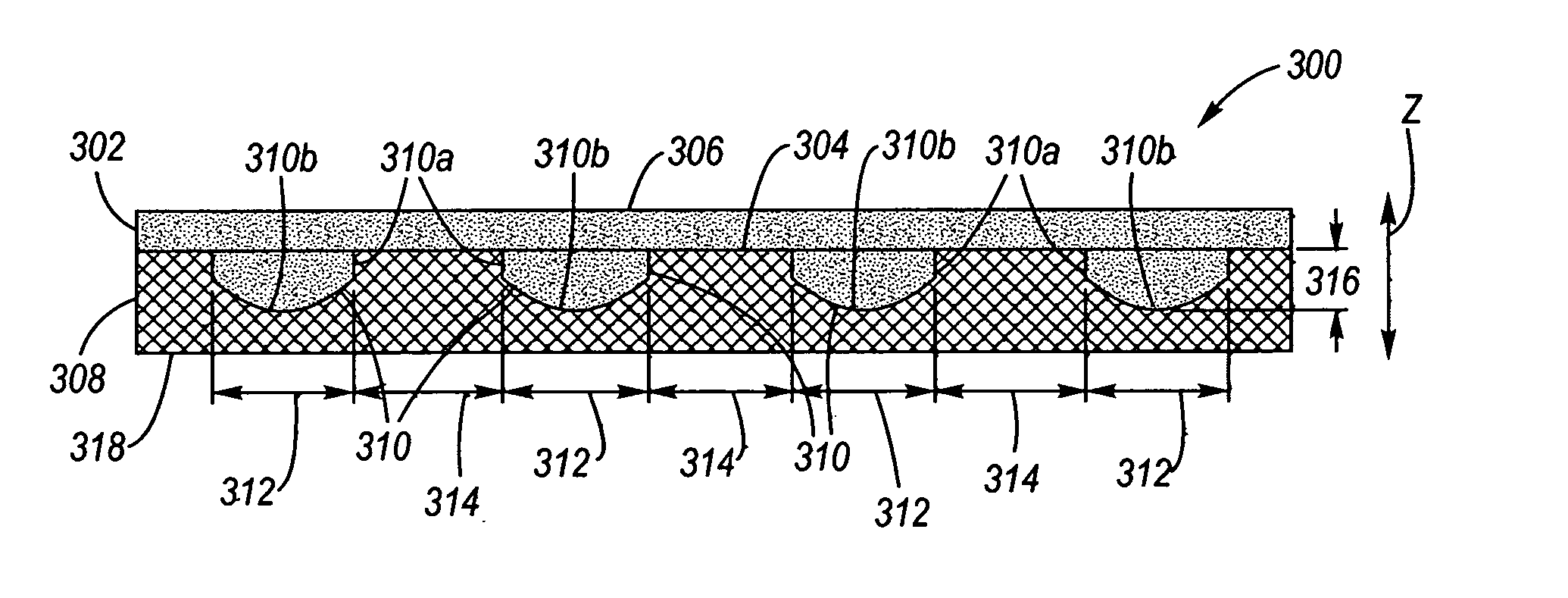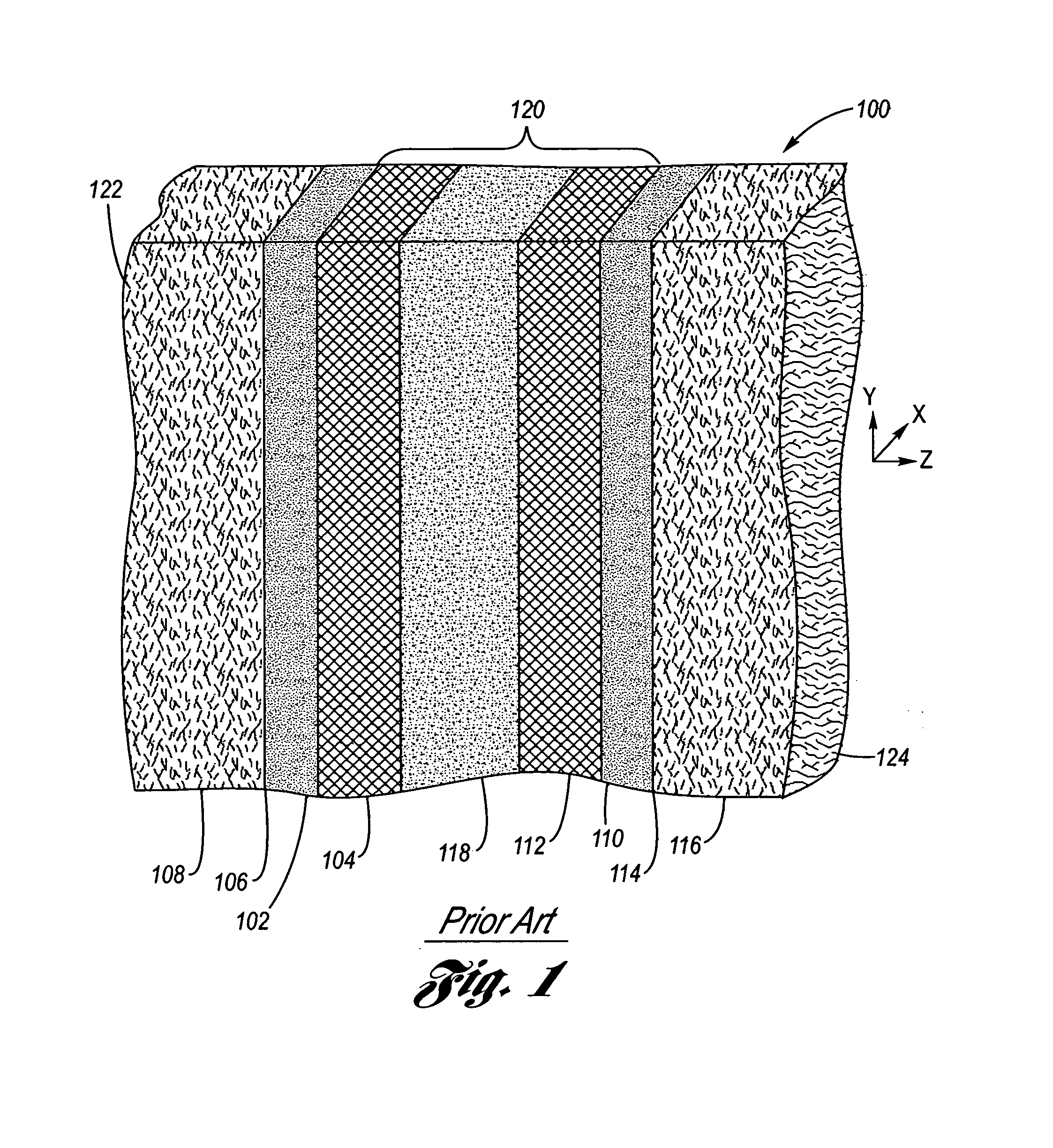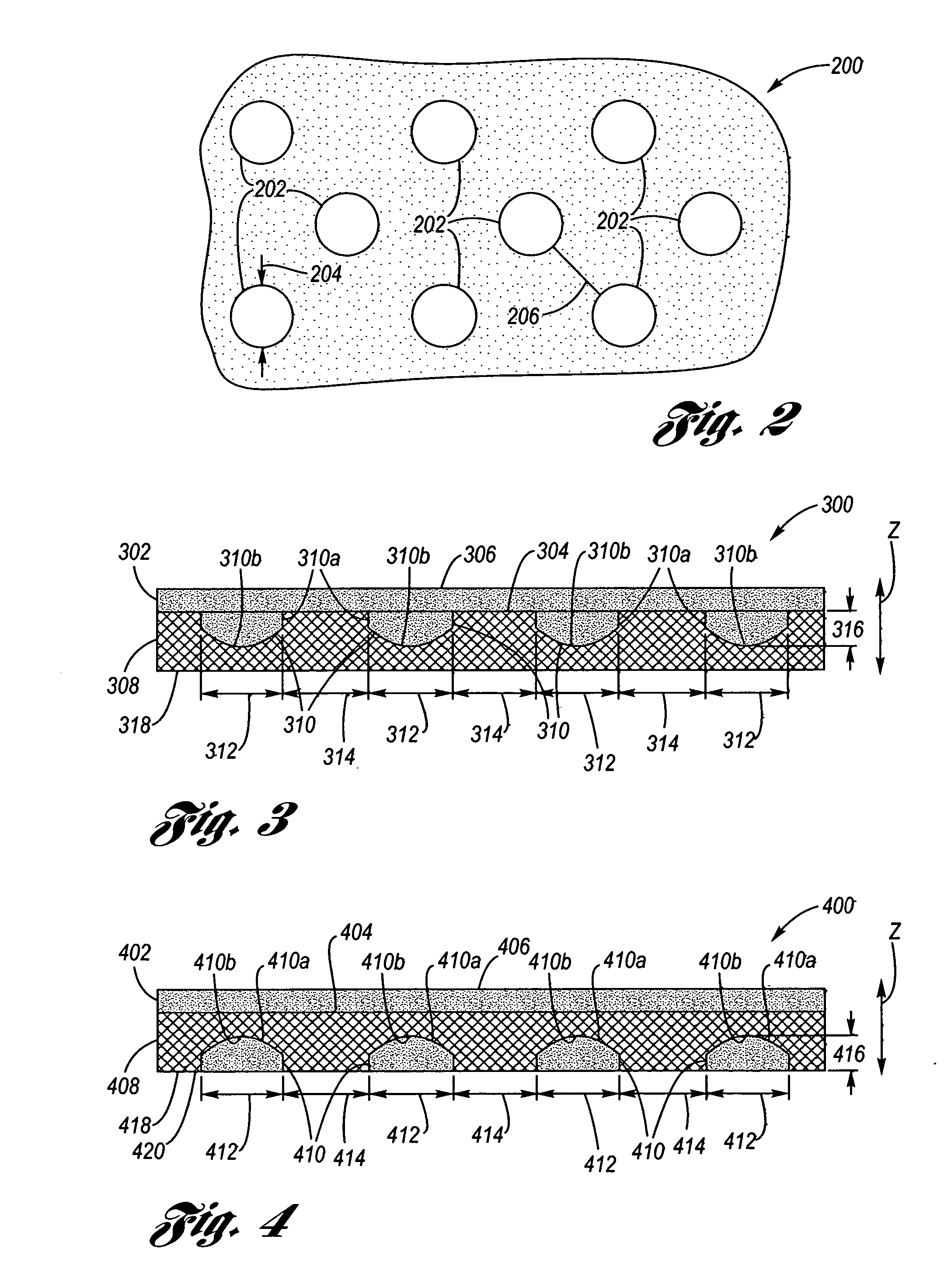Diffusion media with continuous micro-porous layers incorporating non-uniformity
a technology of microporous layers and diffusion media, applied in the field of microporous layers, can solve the problems of accelerating performance degradation, reducing electrical contact resistance with the adjacent catalyst layer, and affecting the performance of fuel cells, so as to reduce the transfer of reactant gases, reduce current production, and good water management
- Summary
- Abstract
- Description
- Claims
- Application Information
AI Technical Summary
Benefits of technology
Problems solved by technology
Method used
Image
Examples
Embodiment Construction
[0038]FIG. 2 depicts a mask 200 containing a geometric hole pattern 202 utilized with the first and second preferred embodiments of the present invention wherein the hole size (diameter) 204 is 1 / 16 of an inch and the hole pitch 206 is ⅛ of an inch The hole size 204 and hole pitch 206 are empirically determined in accordance with the properties of the micro-porous media, the diffusion media, and application pressure of the micro-porous media on the surface of the diffusion media as previously described.
[0039]FIG. 3 is a first example 300, utilizing the mask 200 of FIG. 2, of an implementation of a first preferred embodiment according to the present invention. A continuous MPL 302, consisting of a micro-porous media, is applied to one surface 304 on the electrode side 306 (opposite the flowfield side 318) of at least one or more diffusion media 308 of a fuel cell. A geometric dot pattern 310 of micro-porous media 310a is also introduced into a multiplicity of regions 310b in the sam...
PUM
| Property | Measurement | Unit |
|---|---|---|
| porosity | aaaaa | aaaaa |
| thicknesses | aaaaa | aaaaa |
| thicknesses | aaaaa | aaaaa |
Abstract
Description
Claims
Application Information
 Login to View More
Login to View More - R&D
- Intellectual Property
- Life Sciences
- Materials
- Tech Scout
- Unparalleled Data Quality
- Higher Quality Content
- 60% Fewer Hallucinations
Browse by: Latest US Patents, China's latest patents, Technical Efficacy Thesaurus, Application Domain, Technology Topic, Popular Technical Reports.
© 2025 PatSnap. All rights reserved.Legal|Privacy policy|Modern Slavery Act Transparency Statement|Sitemap|About US| Contact US: help@patsnap.com



